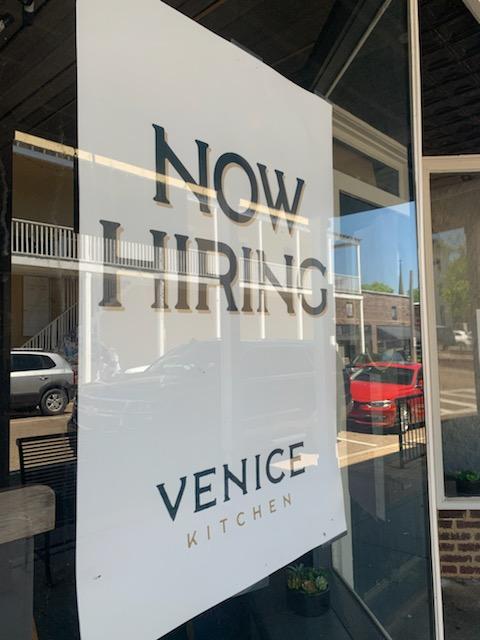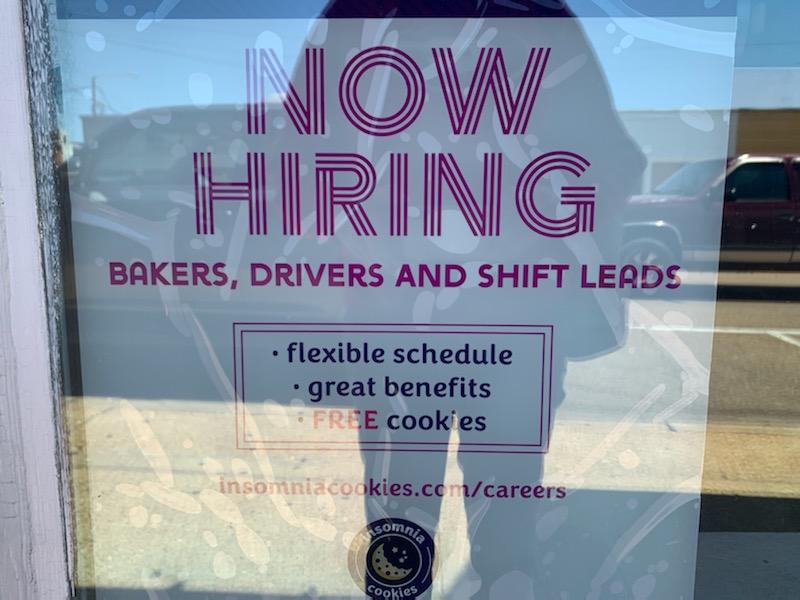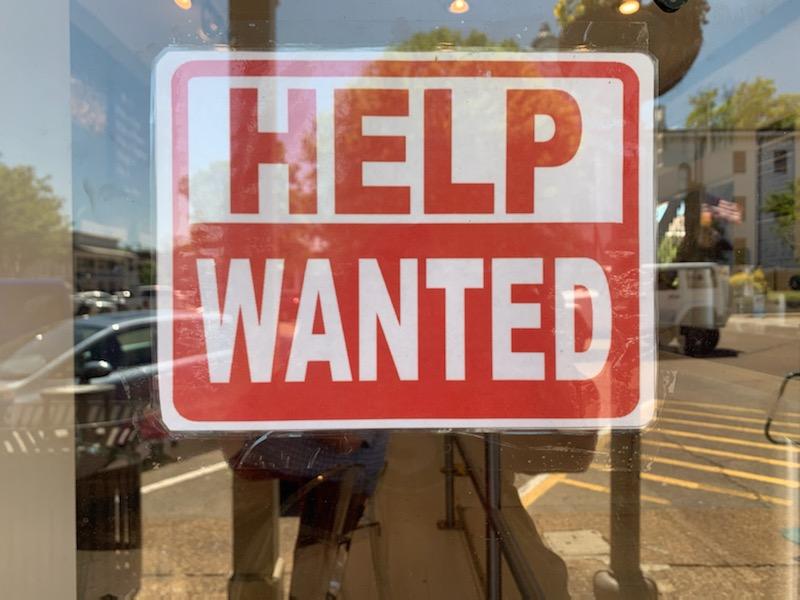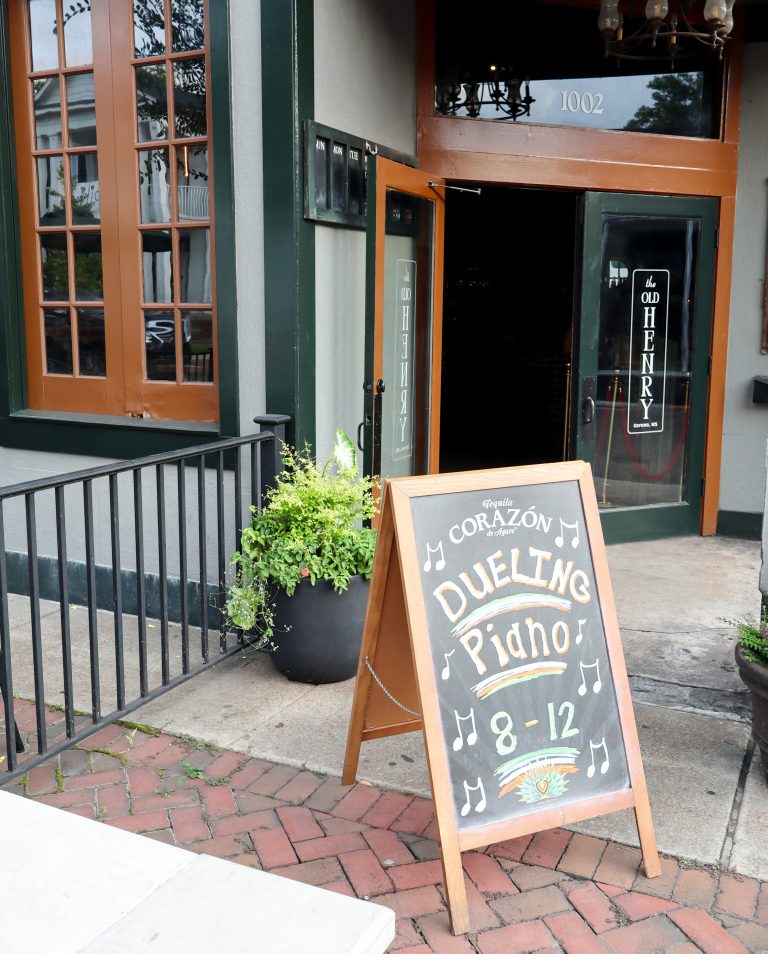
“Help wanted” replaces “mask required” on signs all over town
A temperate spring and an exhilarating college baseball season have brought Oxonians back to The Square in droves. Consumers, that is. A quick stroll around the town’s center points to a contrary phenomenon: Businesses, restaurants in particular, are struggling to find employees to satisfy booming consumer demand. Nearly every restaurant on and off the Square sports a doorway sign reading “Now Hiring. All positions.”
The phenomenon is not unique to Oxford. Nationwide, restaurant owners face the same bleak labor market. The National Restaurant Association reports that, while restaurant employment has been on a slow but steady rise in the past year, staffing levels still lag 20 percent below the previous year. Owners and managers are trying to find creative ways to attract employees; some have even begun to offer sign-on bonuses. But when one Tampa McDonald’s manager advertised $50 to interview at his store, he still received no applications. Oxford’s Krystal on Jackson Avenue is currently trying the same approach.
As major news outlets like the New York Times and the Charleston Post and Courier have explored this new dynamic, one dominant assumption permeates their comment sections. Many readers believe restaurant workers simply do not want to go back to work while they are able to stay home and collect unemployment. Such commenters portray these potential workers as lazy leeches, milking the system as long as possible.
To some extent, this assumption seems plausible. As Oxford restaurants began to reopen last summer, many furloughed service industry employees were receiving two or three times their average pay from unemployment. Still, the vast majority of industry ‘lifers’ did return to their old positions quickly, fearing that if they waited, they would lose those hard-earned positions altogether. Now those employees are working overtime at understaffed establishments as their bosses desperately search for new staff.
More insightful theories counter the narrative that continued stimulus checks are to blame for the restaurant labor shortage. The service industry is notoriously stressful, and as Adam Reiner points out, “returning to work brings with it a whole new set of challenges: inconsistent scheduling, unpredictable income, and the possibility that capacity restrictions or lockdowns may be reinstated.” Workers also come back to more responsibilities, such as policing masking and packaging to-go orders.
Forced to stay home during the initial months of the coronavirus pandemic, restaurant employees had time to take stock of the realities of the service industry. Many describe that period as a break they didn’t know they needed. They’ve enjoyed more regular sleep schedules, eating three meals a day, and spending more time with family. In the face of so much uncertainty, coupled with the service sector’s historically low wages and lack of benefits, it’s easy to see why some would choose to leave restaurant work for jobs that can afford them more predictability and a less chaotic lifestyle. Others who choose to stay finally have bargaining power and time to hold out for the most attractive positions.
This puts Oxford restaurant employers, who already operate with thin profit margins, in a difficult position. Though they may want to pay employees more and offer benefits such as healthcare and paid time off, business owners say they see no way to do so without raising prices dramatically. Some of the restaurants that have made the Square such an attractive place for locals and tourists have seen rent prices double or even triple since the housing market crashed in 2008.
The Oxford labor pool presents other challenges to employers. Several managers mention an abundance of college students who work primarily for spending money. These employees typically want only a few shifts a week, and they give up shifts or ask for time off more often than their coworkers in order to attend social events, family gatherings, or school functions. That’s understandable, says Cameron Bryant, the executive chef at The Sipp on South Lamar. “They’re at a different stage in life. They have different priorities.”
Lack of affordable housing is also detrimental to the restaurant labor market in Oxford. As housing prices skyrocket, low-wage workers simply cannot afford to live in town. Living on a shoestring budget makes one less likely to have reliable transportation or to manage the most common health concerns. This leads to missed shifts or losing jobs altogether. One restaurant owner reported going through eight dishwashers in two months for just such reasons. Others have repeatedly given loans to their employees to assist with unexpected obstacles.
Restaurant owners in Oxford and elsewhere will have to get creative to contend with the dynamics of low wages, housing insecurity, and lack of healthcare that have long characterized the service industry. While sign-on bonuses may seem like a start, they are simply a Band-Aid on a severely broken business model. We can expect this labor shortage to continue until restaurants wrestle with its root causes.
In the long run, this may mean consumers pay more for meals. The question is whether diners are willing to spend more on the luxury of eating out in order to support the livelihood of those who make that luxury possible.






